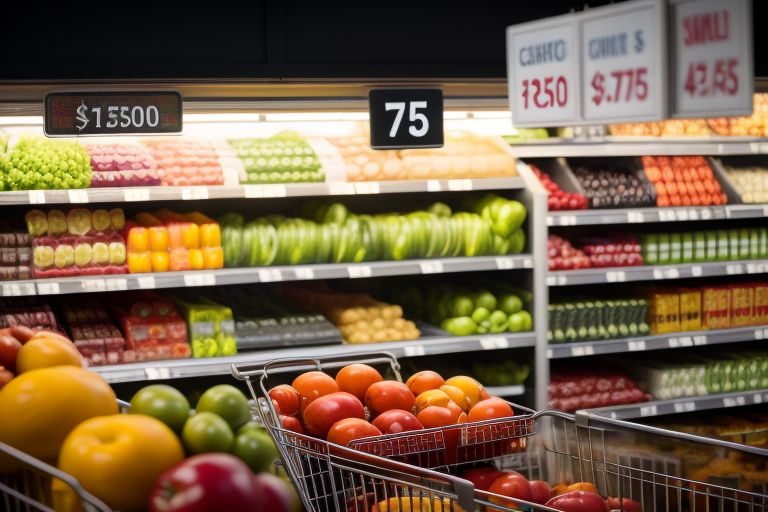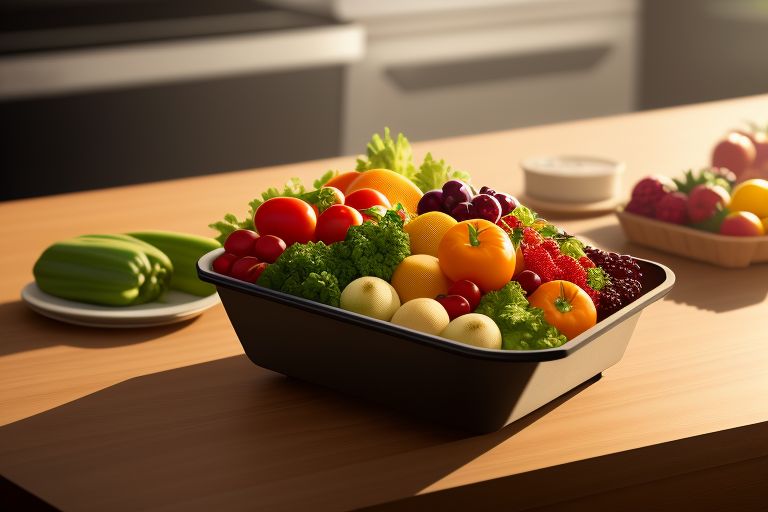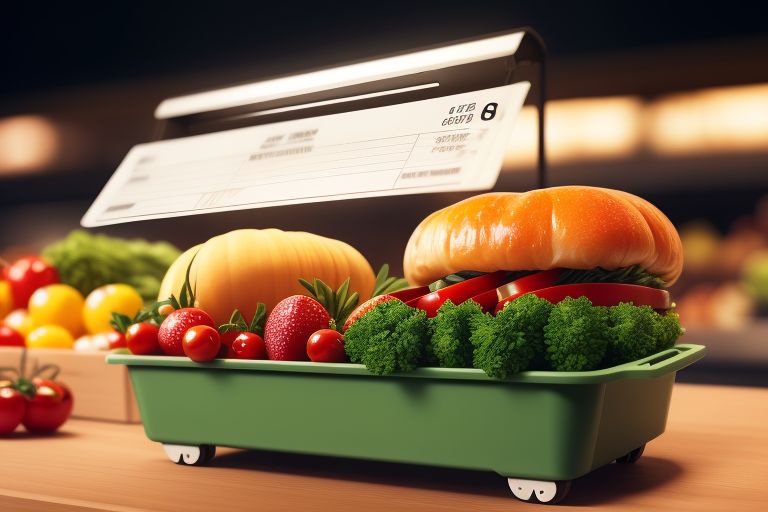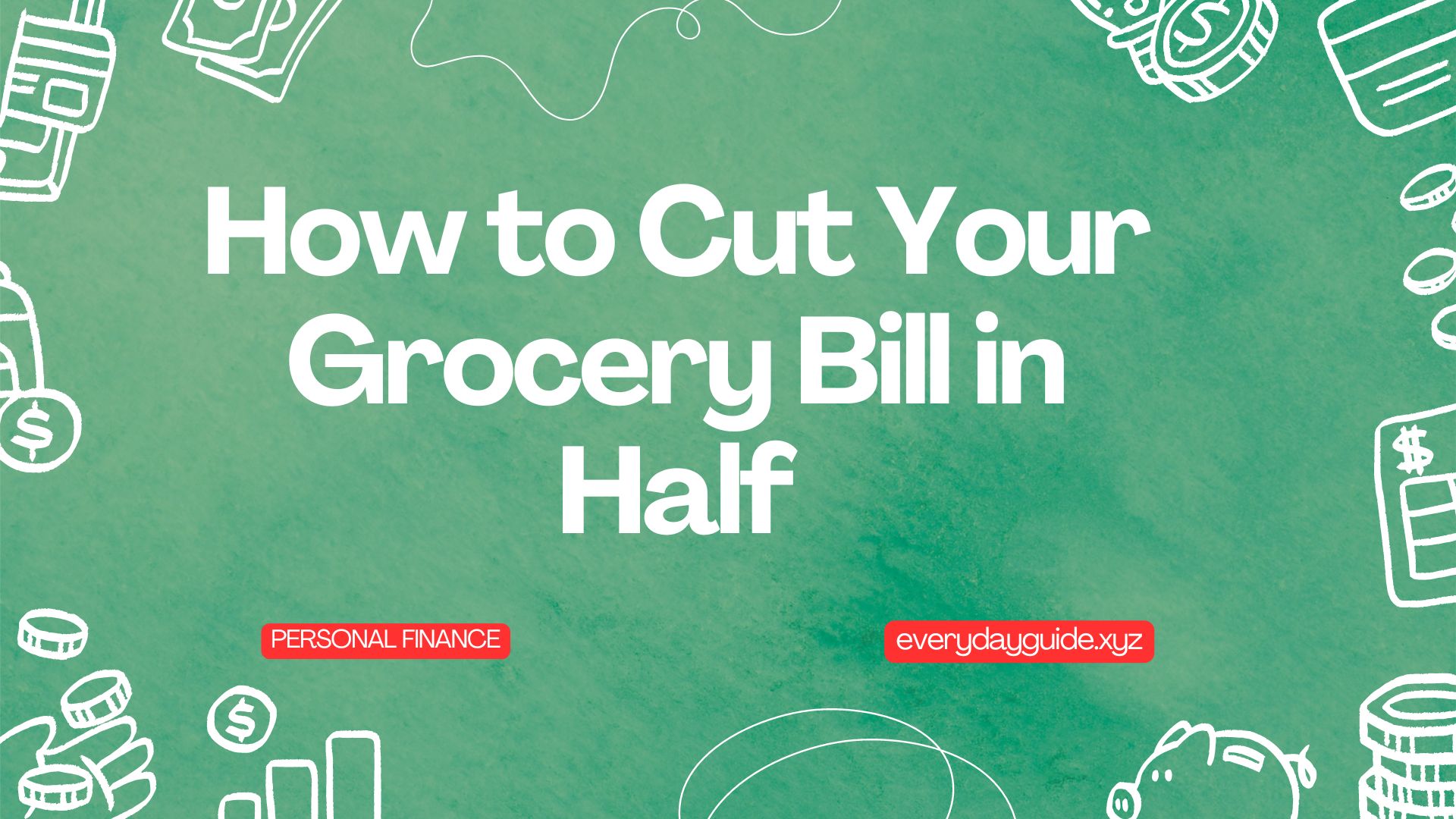Estimating your home grocery bill can be challenging with changing food prices and varying household requirements. Well, if you’ve been looking for some actual ways to slash your grocery bill in half… this is the post for you. To facilitate and expedite this process, we have designed a comprehensive guide of smart tips on shopping your way around the store, planning out your meals and understanding how to budget ahead correctly without compromising the quality of your meals. These tips will work right now, either if you want to free up some more cash in your budget or, just shop smarter.
Why Lowering Your Grocery Bill is Important

Saving money is not the only benefit derived from reducing down your grocery bill, its also about being overall more sustainable and efficient in life. The cost of food just continues to climb year after year so figuring out how to better control your grocery budget should allow some extra room in your budget that can be spent on other important things like savings, vacation, or paying off debt. And you are then also going a little greener by buying less and having this huge positive impact on the planet.
Trimming down on your grocery bill can also go a long way to help in getting better financial fit. Others may have trouble with the food budget, since spending hundreds or thousands of dollars on food can be a problem for families. Therefore, let us now introduce you to the life-changing tips which will revolutionize your grocery shopping habits.
Here’s a simple guide on how to cut your grocery bill in half by creating a list. Sticking to a well-planned list can help you save money and avoid impulse purchases.
How to Cut Your Grocery Bill in Half
Step 1: Assess What You Already Have
- Before heading to the store, check your pantry, fridge, and freezer.
- Note down the items you already have to avoid buying duplicates.
Step 2: Plan Your Meals for the Week
- Choose simple, cost-effective meals.
- Use ingredients you already own, and plan meals that can share similar ingredients to reduce waste.
Step 3: Create a Detailed Shopping List
- Divide your list by categories (e.g., produce, dairy, frozen).
- Stick to essential items you need for your planned meals.
- Focus on sales or discounts for necessary items.
Step 4: Use Coupons and Check Store Promotions
- Look for digital or paper coupons that align with your list.
- Compare store promotions before shopping and prioritize stores with the best deals.
Step 5: Avoid Adding Non-Essentials
- Avoid impulse buys, as they can quickly add up.
- Stick to your list and resist sales on items you don’t need.
Meal Planning – Cut Your Grocery Bill in Half
The single best way to cut your grocery bill by half is through meal planning. It is Not Just Picking Out Recipes for the Week It includes planning out your weekly schedule, but in a way that guarantees no food is wasted, by using common ingredients over unique meals and avoiding impulse buys. Meal planning can save you tens of dollars a week or even hundreds a month if you do it right.

The first step is to look at what you have already in your pantry, fridge and freezer. The idea is to allow these items to guide your weeklong meal plan before they go bad. After you have a list of meals, create a shopping list of just what your family will need to buy. Bring this list with you to the store and STICK TO IT— no impulse buys!
Use Versatile Ingredients
Making foods that can be added to multiple meals helps you save on groceries. A 5-pound bag of potatoes, for instance, can be mashed, roasted or used in potato salad. Moreover, you are able to roast another whole chicken for the evening meal, and then use this leftover product regarding casse-cro?te or greens morning. In this spirit of versatility, you can halve your weekly grocery bill and still eat like a king.
The act of meal planning also helps to stop you being tempted by takeout or fast food, which can absorb a significant amount of your grocery funds. With a plan and these items in pantry, you are less likely to reach for costly alternatives.
Be a Smart Shopper: Purchase Right and in the Season
It is one of the simplest ways to reduce your grocery bill. Supermarkets are notorious for sales cycles, learn this and you realize when is the best time of year to stock up and really make your grocery budget work effectively. Most items are on sale at predictable timings that can last 6-8 weeks in between. Watch any of the products you love, and buy them when they are at their lowest point.
Another way to cut costs in shopping is by buying items in bulk. This works well for non perishables and things that you use a lot of. But be careful with perishables — bulk shopping on those only makes sense if you can eat them before they go bad.

Also, be sure to register your store loyalty programs and download digital coupons. As a bonus, these tools often offer access to unique deals and discounts that can help you slash your grocery bill by half and even more without lifting a finger.
Seasonal and Locally-grown ProduceRestricted, seasonal availability of fresh foods on the island has influenced traditional Puerto Rican cooking.
Buying seasonal produce will go a long way in saving an enormous amount on your grocery bill. Seasonal produce is generally fresher, more nutritious, and less expensive — it doesn’t have to be shipped from far away. You can even go a step further as well and go to your local farmers market where you can get fresh in-season produce for cheaper than at the supermarket. As a bonus, this will assist you to save money at the grocery and put more directly into local businesses as well as feed you better, fresher food.
You might pay more for out-of-season fruits and vegetables because those crop types are usually imported from other areas of the world. Shop local, buy in season — this way you will minimize the cost of fresh vegetables.
Also Read More:
- 5 Mistakes That Are Costing You Money
 It is these small mistakes that can add up in time to amount to huge sums, and this is why being more careful with your personal finance is the key to long-term success. This blog is about, 5 Financial Mistakes Most… Read more: 5 Mistakes That Are Costing You Money
It is these small mistakes that can add up in time to amount to huge sums, and this is why being more careful with your personal finance is the key to long-term success. This blog is about, 5 Financial Mistakes Most… Read more: 5 Mistakes That Are Costing You Money - 7 Easy Ways to Save Money on Your Daily Commute
 Getting to and from work or school every day can eat a huge chunk of your budget without even realizing it. Thankfully, there are several simple money saving techniques you might have overlooked while driving to work every day. Whether that… Read more: 7 Easy Ways to Save Money on Your Daily Commute
Getting to and from work or school every day can eat a huge chunk of your budget without even realizing it. Thankfully, there are several simple money saving techniques you might have overlooked while driving to work every day. Whether that… Read more: 7 Easy Ways to Save Money on Your Daily Commute - 7 Tips for Saving Money While Shopping Online
 It is the era of digitalization and shopping online has now turned into an instant process to get desired things. Online shopping is great in terms of convenience but it has its downsides as well, mainly the case of overspending. Look… Read more: 7 Tips for Saving Money While Shopping Online
It is the era of digitalization and shopping online has now turned into an instant process to get desired things. Online shopping is great in terms of convenience but it has its downsides as well, mainly the case of overspending. Look… Read more: 7 Tips for Saving Money While Shopping Online - How to Cut Your Grocery Bill in Half
 Estimating your home grocery bill can be challenging with changing food prices and varying household requirements. Well, if you’ve been looking for some actual ways to slash your grocery bill in half… this is the post for you. To facilitate and… Read more: How to Cut Your Grocery Bill in Half
Estimating your home grocery bill can be challenging with changing food prices and varying household requirements. Well, if you’ve been looking for some actual ways to slash your grocery bill in half… this is the post for you. To facilitate and… Read more: How to Cut Your Grocery Bill in Half - 8 Easy Decluttering Tips for Busy People
 With today being so fast paced clutter can creep in as a creeping vine, making it difficult to be organized and focused. When you are a busy person, clutter can seem daunting to deal with but it need not be so.… Read more: 8 Easy Decluttering Tips for Busy People
With today being so fast paced clutter can creep in as a creeping vine, making it difficult to be organized and focused. When you are a busy person, clutter can seem daunting to deal with but it need not be so.… Read more: 8 Easy Decluttering Tips for Busy People
Why Overspend When You Can Learn About Your Grocery Budget
Having a grocery budget is one of the best way to lower your overall expenses. Establish a reasonable, predetermined budget for the week or month in cash and bring it with you when you go shopping. You can start by creating your own budget based on how much money you make, the number of people in your household and any dietary restrictions. So you do not over spend, establish guidelines for how much money you can spend each month.
Most people even save more by going biweekly or monthly then weekly shopping. This minimises impulse buying and should make you utilise as much of what is already in your pantry or fridge.
Track Your Expenses
If you want to reduce your grocery bill by half, monitoring what you spend will be very important. Use an app or create spreadsheets to keep track of your spending and stay on top whether you are exceeding your budget or sticking to it. Track what you spend, so you can see where you are spending more than necessary (like snacks, beverages and convenience foods) as well.
In the long run, tracking your spending will increase your awareness; You may find that you are actually over-spending on certain things, and this information can help you to make better decisions going forward.
Reduce Costs with Coupons and Cashback Apps
They may cut your grocery bill in half, but they are designed so that you can use them for strategically. No more digging the scissors for cutting paper coupons out of the Sunday newspaper. By today digital coupons are available and money saving apps exist to help you save so much time with groceries.
Using Coupons to Your Advantage

Many grocery stores have their own apps where you can “clip” digital coupons right onto your loyalty card. This way, you just save automatically at the register without having to bring a paper coupon. Coupons.com: Similar to other prominent coupon sites and apps such as Coupons. They come with built-in rewards programs, like Rakuten and Ibotta, that allow you to earn cash back on specific purchases at stores — increasing the number of deals you can get.
Pair Sales with Coupons for the Best Deals
For best value, combine coupons with sales at the store. Some stores will also let you “stack” deals (and others won’t), so just note that when using a coupon in conjunction with an existing sale price. This tactic works especially well on non-perishable items and household essentials that you can keep entering store for.
A few stores even have double coupon days, which means the worth of a coupon would be doubled when you check out. Whenever possible, use these promotions to save big on your weekly grocery bill and literally HALF YOUR BILL!
How Food Waste Affects Your Grocery Bill
Wasting food is a leading indicator of unnecessarily high grocery bills. The USDA reports that the average American family wastes 31% of their food annually. And, guess what, this waste hits you right in the pocket book. Simply by stopping food waste, you will already cut your groceries in half.
To Save Even More-The Fight Against Food Waste
In order to start eating more sustainably, you should store your food in the right way first. Reading this book helps to preserve perishables like fruits, vegetables and dairy by preserving them properly. Food can be stored by freezing it, using an airtight container for leftovers and labeling items clearly.
Plan for Leftovers
Plan for Waste — Leftovers are Ok Cook baig batches when you are making dinner, you can have the leftovers for lunch the next day. That cuts down on the amount of food you waste, and makes meal prep easier, too.
Be Creative In First Place To Make Use of Leftovers If You Are Ambiguous on How to Utilize Them Leftover vegetables, for instance, can form the basis of a stir-fry or soup or be mixed into a frittata. Reusing: well, of course you can reduce waste and save expenses by using the same product for multiple purposes.
Save money buying off brand instead of name brand
When seeking to cut your grocery bill in half generic or store brands instead of the name brands is one of the easiest ways. The same is true for most generic products whose quality is nearly identical to the name-brands, but can be purchased at discount. In comparison with branded medicines, generic products are substantially more affordable (from 30% to 50%)
The Economic Value of Generic Brands
Although it may not seem like it, but there are generic versions of almost everything — from canned goods to cleaning products. Next time you shop, compare prices between name brands and store brands — you may be surprised by how much less the generic brand costs.
Taste Test and Compare
And if you have any trepidations about making the generic switch, get your family together for a blind taste test. Based them on with a few things that you know the store brand of and try it against their name brand. How hard might it be to find a difference in taste or quality, leaving the only obstacle for making the switch as moving your trash can?
Some other money-saving substitutions include using store-brand cleaning supplies, toiletries and household items as opposed to traditional name brand products. Because these items generally use the same active ingredients as name brands, they can be just as effective and cost merely a fraction of the price.
Advantages Of A Cash Only System
If you are unable to prevent over-shooting your grocery list and spending big on groceries, then you switch to cash only. This will force you to stick to your budget by not only leaving your cards at home but taking a pre-determined amount of cash with you, and nothing more. This will help you avoid overspending and help making seem more deliberate.

